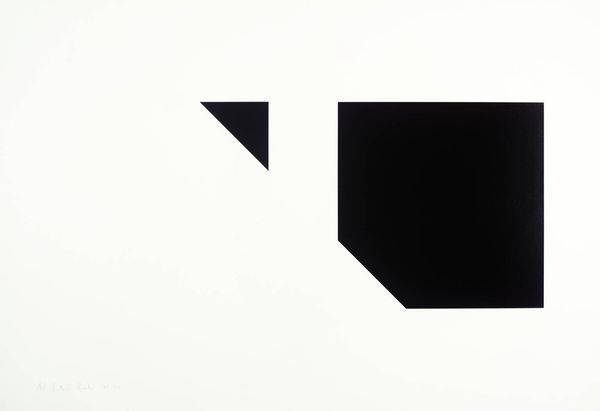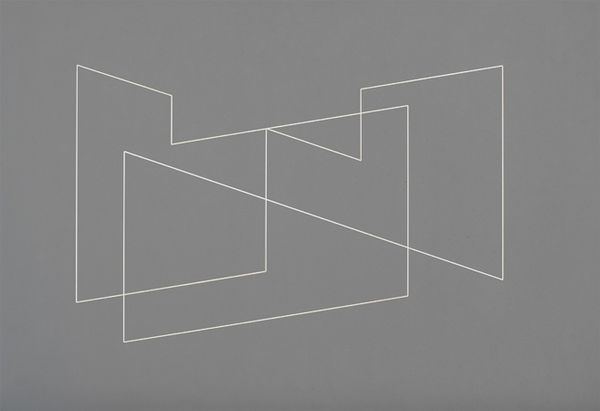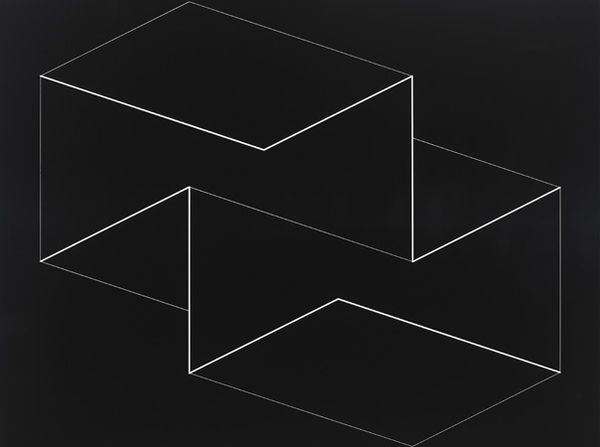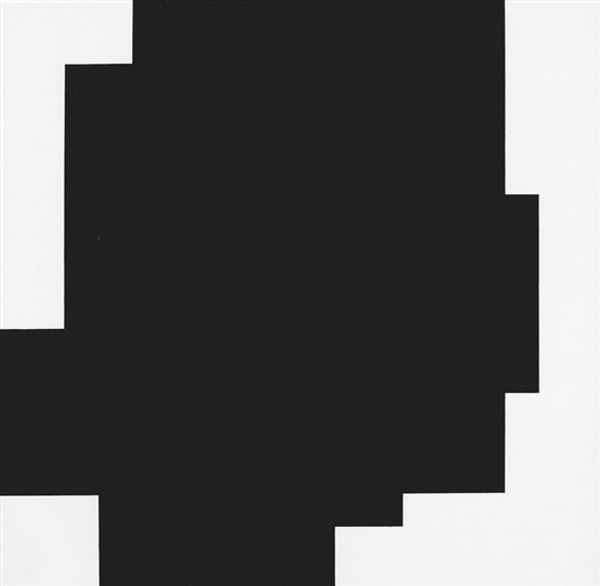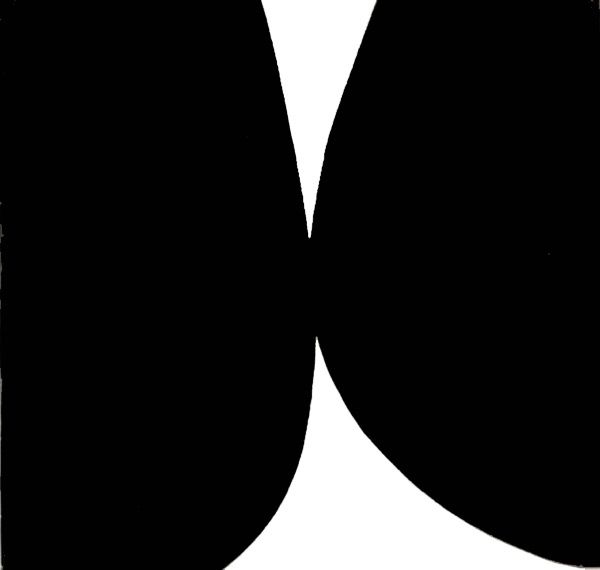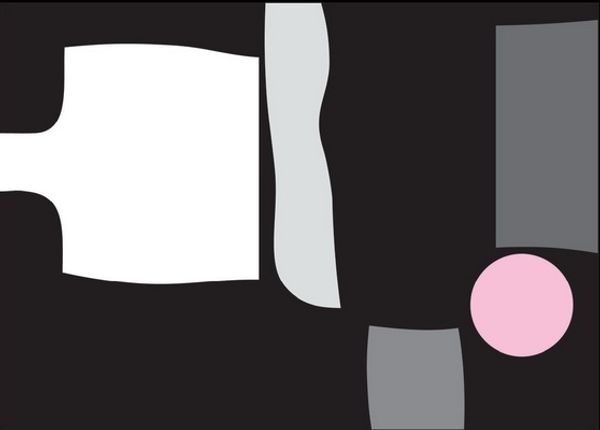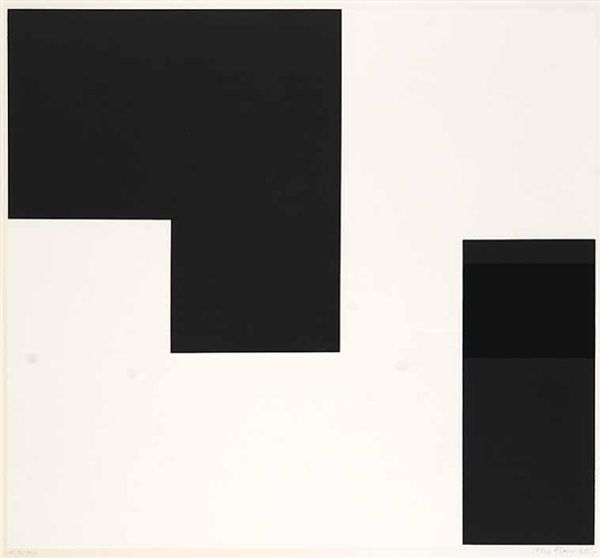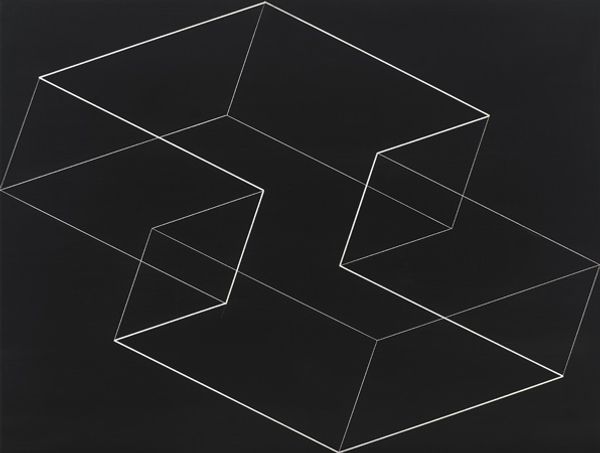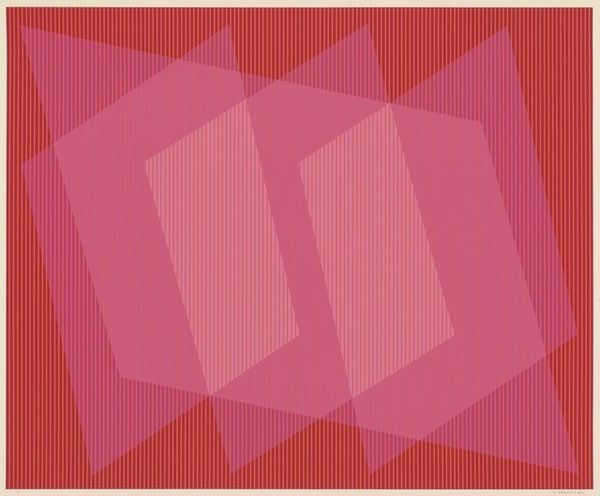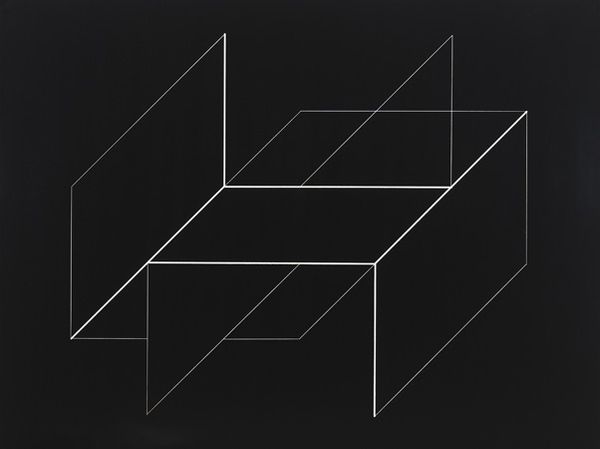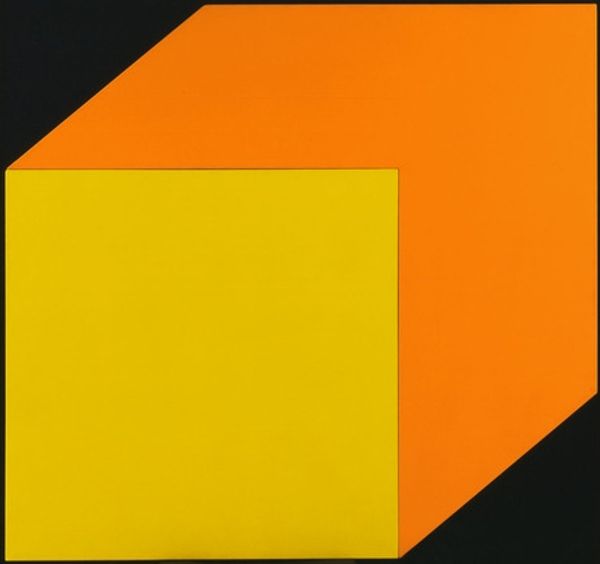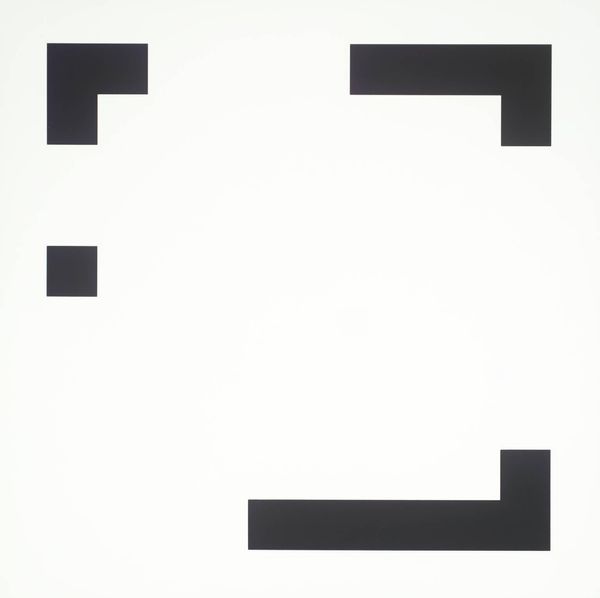
#
minimalism
#
op art
#
geometric
#
geometric-abstraction
#
abstraction
#
line
#
hard-edge-painting
Copyright: Carmen Herrera,Fair Use
Editor: Right, let's talk about Carmen Herrera's "Yesterday" from 1987. It's a striking piece—a simple geometric composition of a white zig-zag line against a black background. It feels so precise, almost like a diagram. What symbols or historical meanings might be embedded within this apparent simplicity? Curator: It's precisely in that perceived simplicity where the magic resides. What seems like a stark geometrical figure also evokes an emotional register and perhaps alludes to personal narratives of diasporic experience, doesn't it? The broken line, for me, speaks of fragmentation, absence... memories flickering in the dark. Editor: That’s a poignant way to put it. The 'Yesterday' of the title suddenly has more weight. The line isn't continuous; it begins and ends abruptly. Curator: Consider the cultural memory Herrera carries. Born in Cuba, she navigated male-dominated art worlds. The zigzag can be seen as an echo, an "S" shape reminiscent of, say, a reversed or fractured "S" perhaps for self. It's less about a literal symbol and more about the feeling evoked: displacement, resilience, and a powerful visual language stripped to its essence. Editor: So you see the geometry itself as a kind of personal symbolism? Curator: Precisely. It transcends mere geometry. It becomes imbued with the artist’s history, struggle, and triumphs, speaking volumes about cultural memory, migration and the transformative nature of remembering. What’s your reading? Editor: I initially saw it as purely formal, but now I see how reductive that was. It makes you think about how an artist's entire life can subtly shape even the most minimalist form. Curator: Indeed. The power of iconography lies in its capacity to express complex emotions through deceivingly simple means, urging us to decode personal experience encoded in visual form.
Comments
No comments
Be the first to comment and join the conversation on the ultimate creative platform.
